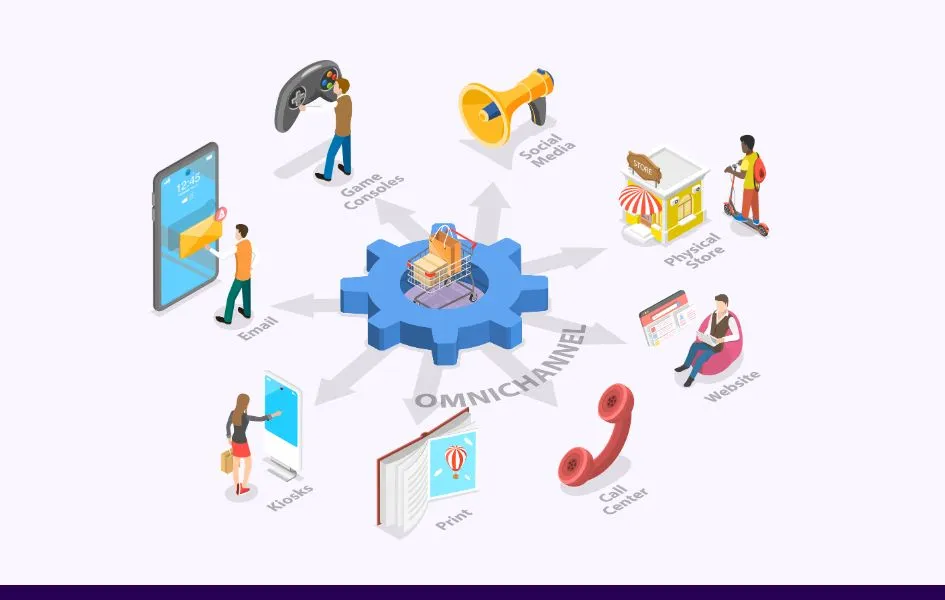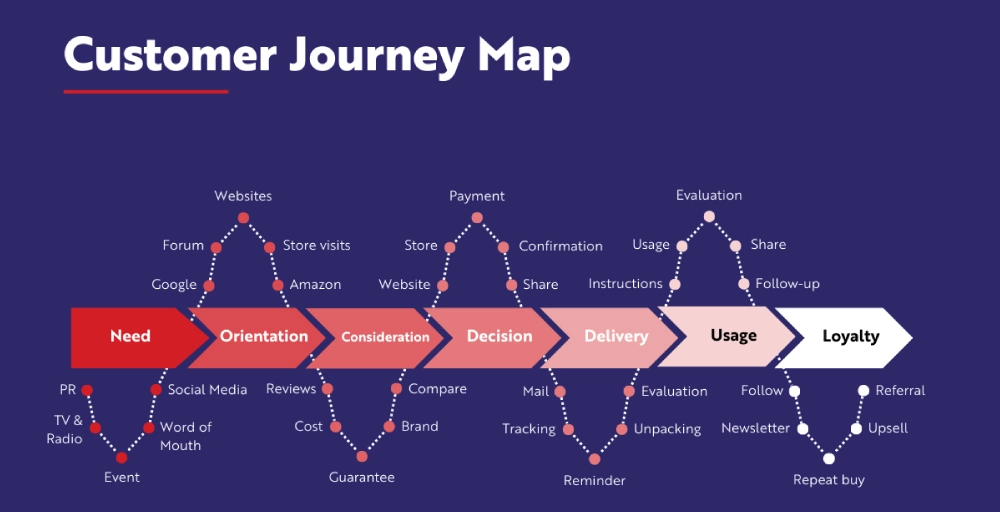Today, contact centers are experiencing a major change. Technology is advancing quickly, and customers’ needs are shifting. To keep up, contact centers use smart tools like Artificial Intelligence to automate tasks and offer services across multiple channels.
This helps them provide customers with 😀 personalized, efficient, and smooth experiences that meet their high expectations.
This guide will further explain the current state of contact center along with their future and their functions.
Let’s get started 👇.
🔑 KEY HIGHLIGHTS
- Contact centers are increasingly integrating AI (artificial intelligence) to enhance the efficiency of agents and improve customer service.
- Technologies like artificial intelligence chatbots, virtual personal assistants, and cloud-based solutions are making operations smoother and improving the customer experience in the contact center.
- Future contact centers will use automated AI and machine learning approaches, analytics & predictive models to deliver more effective cross-channel customer service.
- Some of the main roles of AI in contact centers are AI-powered chatbots, predictive analysis, personalization, customer journey mapping, and enhancing CX with technology.
11 Current trends in the contact center industry
These trends in contact centers underscore a shift towards more integrated, efficient, and customer-centric operations, leveraging digital transformation, omnichannel support, and AI-driven automation to redefine service delivery standards and enhance overall customer satisfaction.
1. Digital Transformation
Digital transformation in contact centers refers to the process of integrating multiple digital technologies to modernize and improve operations. This includes adopting AI, automation, and various digital channels to enhance customer interactions, streamline processes, and boost overall efficiency.
Contact Centers now leverages digital tools to optimize workforce management, gather actionable insights from customer data, and provide faster, more responsive service. Ultimately, digital transformation enhances the overall customer experience by integrating technology into every aspect of contact center operations.
2. Omnichannel Support
The contact center previously supported only one communication method and that was via phone support. But now, contact centers provide omnichannel support to customers. This means customers can contact via different channels such as calls, email, live chat, social media, and many more. The omnichannel customer engagement market is forecast to grow 13% annually to reach $18 billion by 2030.

This flexibility gives customers the freedom to contact agents through any channel they prefer, eventually improving the customer experience. Moreover, increasing omnichannel support in multiple contact centers helps to address and resolve customer queries faster.
3. AI & Automation
There is no doubt that AI such as artificial intelligence, machine learning, and robotic process automation has been transforming the way how contact center operates. This tool streamlines repetitive tasks, handles customer interactions efficiently, and delivers quicker, personalized service experiences.

In addition, automation is projected to increase 5x, reaching 10% of agent interactions by 2026. In addition, these AI-based tools assist human operators with relevant information to solve diverse client issues in a more informed manner. These advanced technologies excel at managing routine inquiries, directing customers to the right resources, and offering real-time support to agents.
Technological Innovations
These technological innovations in contact centers are reshaping customer service paradigms by providing enhanced flexibility, deeper customer insights through advanced analytics, and improved efficiency and satisfaction through AI and machine learning applications.
4. Cloud-based solutions
Cloud-based contact center solutions provide benefits, and adopting the cloud has become steadily more appealing for businesses trying to upgrade their customer service process. These solutions offer extreme flexibility to any company because it can expand or shrink as it wishes without suffering the physical hardware limitations as it would be in its own premises.
Moreover, the cloud-based model cuts down on initial capital expenses and refocuses expenses for the service on easily predictable monthly fees while also offering remote working.
5. Advanced analysis
Advanced analysis in technological innovations for customer experience involves leveraging cutting-edge tools and techniques to better understand customer behavior, preferences, and needs. By applying advanced analytics to customer data, businesses can uncover hidden patterns, identify areas for improvement, and develop targeted strategies to enhance customer experiences and drive loyalty.
This gives contact centers a lot of information about their customers and tools to analyze it. In addition, this helps them understand their customers better, which allows them to have more personal conversations with them and make informed- decisions to improve the customer experience.
6. Machine learning & AI
AI and machine learning are being adopted in contact centers to increase customer satisfaction and agent efficiency. AI-led chatbots and virtual agents can resolve automated customer cases for simple questions and responses, while social sentiment and potential customer reverting statistics would help human agents communicate.
As the importance of AI is increasing in contact centers, 76% of contact centers plan to invest in AI in the next 2 years. Call centers employ artificial intelligence to determine efficient ways of connecting customers with the right advisor, estimate customer behavior, and undertake tasks that an individual would otherwise execute.
The role of AI in the contact center
AI in contact centers plays a pivotal role in transforming customer service operations. It leverages capabilities such as AI-powered chatbots for routine queries and predictive analysis to enhance customer interactions and operational efficiency.
7. AI-powered chatbots
Conversational AI-based chatbots and virtual agents can deal with routine customer queries, pass on information, and help customers self-service so that human customer support agents can handle complex issues. These AI chatbots employ NLP and ML to identify customers’ intents and then respond in a way that is uniquely similar to humans.
8. Predictive analysis
AI and machine learning algorithms can analyze customer data, call recordings, and agent interactions to generate predictive insights. This allows contact centers to anticipate customer needs, optimize call routing, and personalize the customer experience.
9. AI in customer service
Beyond chatbots, AI is used in contact centers to enhance the overall customer service experience. This includes sentiment analysis to gauge customer emotions, automated quality assurance to monitor agent performance, and real-time assistance to provide agents with relevant information during customer interactions.
Customer Experience (CX) in Contact Centers
Customer Experience (CX) in contact centers is increasingly shaped by strategies such as personalization, customer journey mapping, and leveraging technology like AI and machine learning to deliver enhanced, tailored interactions that meet evolving customer expectations.
10. Personalization
Personalization is a significant point of emphasis that is necessary for companies to clinch their customer encounters. By utilizing data analytics, contact centers can provide specific interactions with customers, thus making each interaction more informative and exciting.
This eventually meets customer needs and expectations, increasing customer loyalty and satisfaction levels.
11. Customer Journey Mapping
Customer journey mapping entails identifying and analyzing each point of contact a client establishes with an organization. This approach allows you to explore critical areas of customer-shared experiences to define pain points and potential improvements to deliver uncomplicated user satisfaction. This process is crucial for customer journey optimization, as it allows organizations to streamline processes, enhance customer satisfaction, and ultimately foster stronger customer loyalty.

Furthermore, this can help an organization improve its overall experience. The customer journey map shows where there might be blockages or issues with the process. This flow of journey maximization gives companies efficient insight into how they can design their services to fit the customers’ expectations and needs.
12. Enhancing CX with Technology
Technologies like AI and machine learning create the opportunity to enhance the customer experience. This technology helps you to provide faster, more accurate, and personalized customer service.
Moreover, it shortens response times, estimates customer requirements, and provides consistent support across different platforms. By addressing customer concerns promptly and offering personalized interaction, businesses can improve the customer experience.
Challenges Faced by Contact Centers
Several challenges faced by contact centers include meeting high customer expectations and ensuring robust data security measures. These underscore the critical need for continuous adaptation and investment in technology and compliance to maintain customer trust and operational integrity.
1. High Customer Expectations
People want their needs met instantly and get the best and most individualized attention in today’s environment. In this regard, meeting these high expectation levels regularly is a significant concern of contact centers.
Clients want decisions within minutes, and interaction with organizations through different channels further defines the need for flexibility and quick response among the contact centers.
A report stated that, 70% of customers prefer organizations to provide customized experiences, and 75% are upset when this does not occur. Neglecting customers’ expectations in this manner may lead to loss of customers and hence dilution of brand reputation and profits for the company. In this situation, constant enhancement and incorporation of customer feedback are vital in continuously ensuring superior quality services are delivered to clients.
2. Data Security Concerns
As contact centers have expanded to manage increasing volumes of data, the focus has intensified on safeguarding customer information against heightened risks and exposures. Therefore, business entities must strictly adhere to laws, especially when addressing security issues involving customers’ personal data.
Sacrifices and slippages that can occur can be construed as legal sanctions, possible fines, and loss of company reputation. This has often required increased intensity in audits, employee training, and the adoption of advanced security technologies for the pinnacle data protection standards.
Customers stand to benefit from having their personal data stored safely, and this can only be achieved by setting up adequate structures and controls against cyber threats.
3. Workforce Management
Mishandling a diverse or remote worker compels an organization to have strong methods and mechanisms to control them centrally. Promoting the agents’ welfare, training issues, and constant consideration of performance output are some of the issues faced by the contact center managers.
Workforce management is all about addressing the operations related to the workforce, managing workloads, and ensuring that motivation is high and that the work climate is constructive.
Also, utilizing technology within the context of workforce analytics is optimal for developing proper workforce strategies for staffing and increased productivity. System development programs and support systems should always be conducted and set up to help maintain good agents and enhance service quality.
The Future Predictions of Contact Centers
Technology innovations such as AI and machine learning will greatly impact contact centers in the future. Such progress will happen by automating repetitious processes and the ability to forecast analytical results and customer service. Multichannel communication will be the norm, where customers can switch between phone, email, chat, social media, and SMS and still get a consistent feel.
Strengthening advanced analytics will enable the extraction of more information about customer behavior, which will help to maintain a constant focus on enhancing the quality of services. Contact centers will center on increased productivity, better customization, and safe, secure communications.
However, teleworking will remain a growing trend, though pursuing effective methods of managing remote employees while maintaining high levels of performance and satisfaction will remain challenging. Rising information security and privacy concerns due to the sensitive nature of handled data necessitate robust security measures and strict regulatory compliance.
Wrapping Up
In 2024, the contact center landscape underscores ongoing transformation. Customer expectations have reached new heights, requiring seamless, personalized experiences across various channels. Businesses that prioritize these expectations through the adoption of innovative technologies such as AI, automation, and self-service tools are well-positioned for success.
The future of contact centers hinges on integrating human and machine capabilities intelligently. AI-driven chatbots will increasingly manage routine inquiries, allowing agents to focus on resolving complex issues.
Simultaneously, advanced analytics will enable data-driven decisions, optimizing agent performance and personalizing customer journeys for enhanced satisfaction. However, the human touch will remain irreplaceable.
FAQs
What does the contact center’s future look like?
The future of contact centers is characterized by a shift towards greater integration of advanced technologies and a heightened focus on customer experience. Artificial Intelligence (AI) and automation will play increasingly pivotal roles, with AI-powered chatbots handling routine inquiries and transactions, thus allowing human agents to concentrate on more complex issues requiring empathy and creativity.
What are the main functions of a contact center?
The main functions of a contact center are:
- Omnichannel Communication
- Inbound and Outbound Calls
- Ticketing and Case Management
- Technical Support
- Reporting and Analytics
- Compliance and Security
What are the 4 elements of a contact center?
The 4 elements of a contact center are:
- People
- Process
- Technology
- Strategy
What are the 3C’s of contact center?
The 3Cs of contact center:
- Customer
- Channel
- Culture
What are the emerging contact center technologies?
Artificial intelligence (AI) and machine learning (ML), cloud-based contact center platforms, omnichannel engagement platforms, chatbots and virtual assistants, speech analytics and sentiment analysis, workforce management and optimization tools, and customer journey mapping and analytics are emerging contact center technologies.
What are the key challenges in managing a contact center?
The key challenges in managing a contact center are:
- Handling a large number of clients and their requests
- Sustaining the level of client satisfaction and maintaining their loyalty
- Recruiting and training the staff
- Staffing and scheduling the agents
- Optimizing the workforce
- Unification of various communication channels and platforms
- Balancing clients’ satisfaction level with cost and productivity requirements





